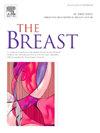Evaluation of cardiotoxicity following breast cancer irradiation in an Asian cohort in real-world settings
IF 7.9
2区 医学
Q1 OBSTETRICS & GYNECOLOGY
引用次数: 0
Abstract
Background
Adjuvant radiotherapy (RT) for early-stage breast cancer is associated with increased major cardiovascular (CV) events. This study investigates cardiac toxicity in an Asian breast cancer cohort, focusing on the interplay between RT, cardiovascular risk factors, and systemic treatments, a topic less explored in regions with lower cardiovascular disease (CVD) prevalence.
Methods
Patients with breast cancer who underwent adjuvant RT between January 2004 and November 2014 were included in this single-institutional retrospective study. Patients were categorized by CVD risk factors, including obesity, smoking history, prior CVD incidents, chronic kidney disease (CKD), diabetes mellitus, hypertension, and dyslipidemia. The primary outcome was the incidence of major CV events, defined as conditions requiring intervention, including heart failure, arrhythmia, and ischemic heart disease. Kaplan–Meier methods, log-rank tests, and Cox regression models were used for statistical analysis.
Results
Among the 975 patients, the 10-year cumulative incidence of major CV events was 3.7 %, with no significant difference (p = 0.892) between right-sided (3.8 %) and left-sided RT (3.4 %). Patients with low, intermediate, and high CVD risk factors had 10-year cumulative incidences of 0.7 %, 2.5 %, and 13.7 %, respectively. Multivariate analysis revealed that hypertension, CKD, and previous CVD were significantly associated with major CV events. In patients without CVD risk factors, the 10-year incidence of CV events was higher in those undergoing left-sided RT compared to right-sided RT (1.3 % vs. 0.0 %, p = 0.032).
Conclusions
Major CV events incidences following RT in this Asian cohort with low baseline CVD risk were modest. However, the impact was more pronounced in patients without baseline CVD risk factors, emphasizing the need for personalized risk assessment in RT planning.

真实世界中亚洲队列乳腺癌放疗后的心脏毒性评估
背景:早期乳腺癌的辅助放疗(RT)与主要心血管(CV)事件的增加有关。本研究调查了亚洲乳腺癌队列中的心脏毒性,重点关注放疗、心血管危险因素和全身治疗之间的相互作用,这一主题在心血管疾病(CVD)患病率较低的地区较少探讨。方法选取2004年1月至2014年11月期间接受辅助放疗的乳腺癌患者进行单机构回顾性研究。根据CVD危险因素对患者进行分类,包括肥胖、吸烟史、既往CVD事件、慢性肾脏疾病(CKD)、糖尿病、高血压和血脂异常。主要终点是主要心血管事件的发生率,定义为需要干预的情况,包括心力衰竭、心律失常和缺血性心脏病。采用Kaplan-Meier法、log-rank检验和Cox回归模型进行统计分析。结果975例患者中,10年累计主要CV事件发生率为3.7%,右侧RT(3.8%)与左侧RT(3.4%)无显著差异(p = 0.892)。具有低、中、高CVD危险因素的患者10年累积发病率分别为0.7%、2.5%和13.7%。多变量分析显示,高血压、CKD和既往CVD与主要CV事件显著相关。在没有CVD危险因素的患者中,接受左侧RT的10年CV事件发生率高于右侧RT (1.3% vs. 0.0%, p = 0.032)。结论:在基线CVD风险较低的亚洲队列中,RT后主要心血管事件发生率较低。然而,在没有基线CVD危险因素的患者中,这种影响更为明显,这强调了在放疗计划中进行个性化风险评估的必要性。
本文章由计算机程序翻译,如有差异,请以英文原文为准。
求助全文
约1分钟内获得全文
求助全文
来源期刊

Breast
医学-妇产科学
CiteScore
8.70
自引率
2.60%
发文量
165
审稿时长
59 days
期刊介绍:
The Breast is an international, multidisciplinary journal for researchers and clinicians, which focuses on translational and clinical research for the advancement of breast cancer prevention, diagnosis and treatment of all stages.
 求助内容:
求助内容: 应助结果提醒方式:
应助结果提醒方式:


